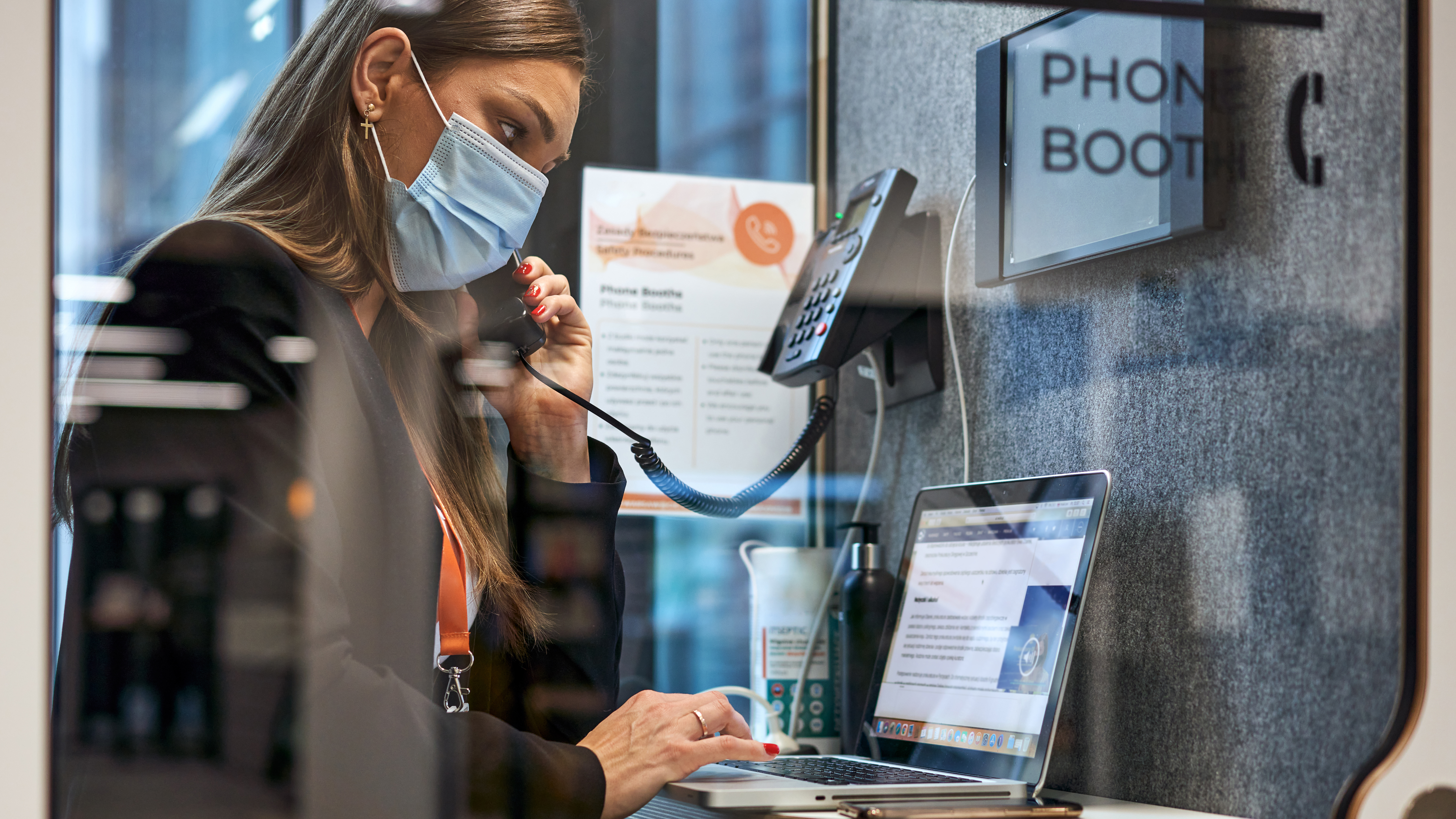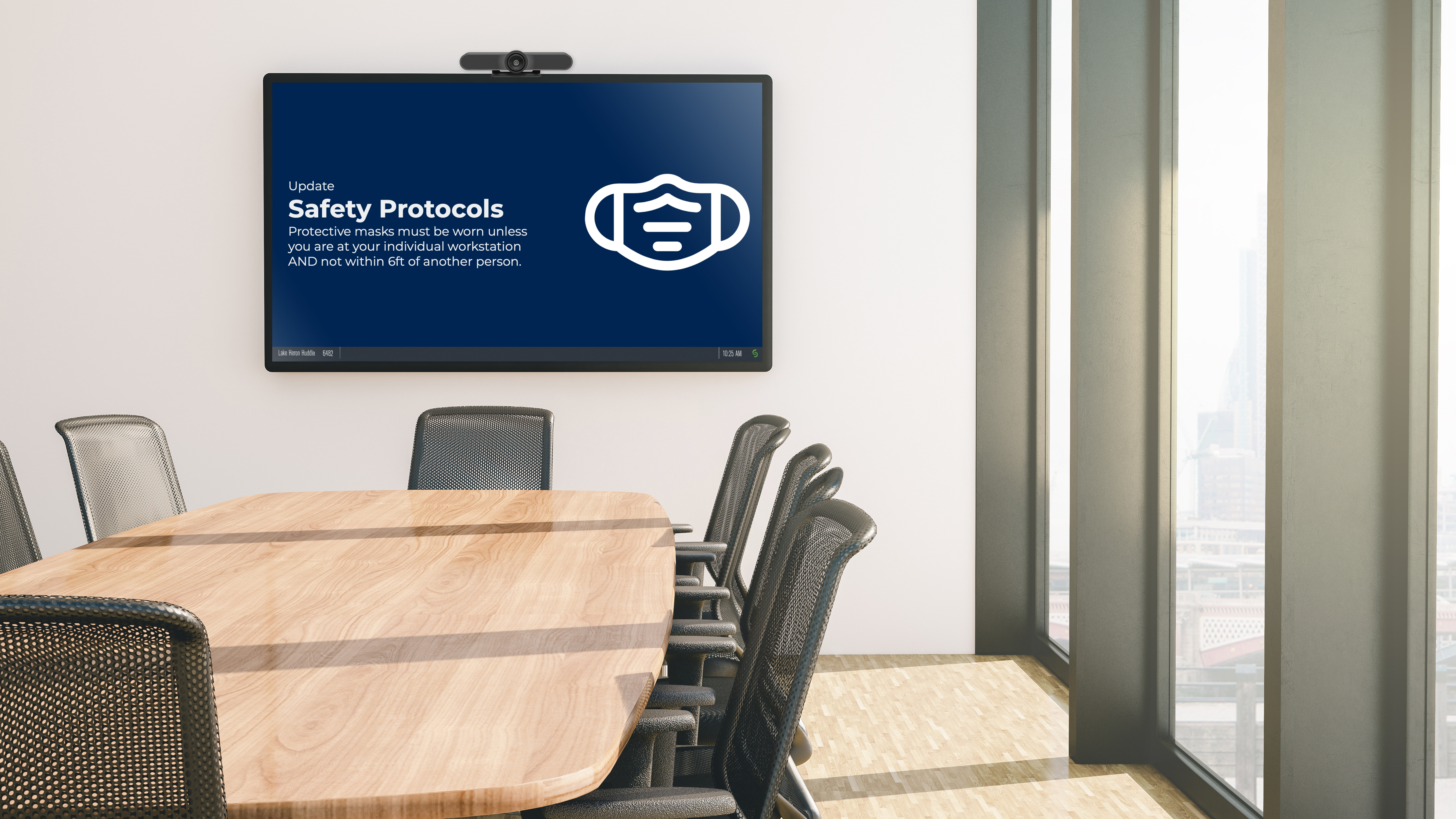This is the second post in our three-part Hybrid Workplace Series. Through this series, we take a look at the meaning of the ‘hybrid workplace’, components for building an effective hybrid workplace that supports your employees, and how the changing office landscape will affect and shape workplace collaboration moving forward.
In the first post of this series, we looked at the meaning of the ‘hybrid workplace’, some important distinctions between today’s hybrid workplace and remote work of the past, and the importance of flexibility for both organizations and employees as they navigate the new hybrid work environment.
While many have grown accustomed to or even favor working from home – or, ‘work from anywhere’ – a recent U.S. workplace survey by Gensler found that workers continue to see the office, and in-person collaboration, as key aspects of their jobs, and the majority of workers would prefer to work from the office at least part-time. The study noted in particular that,
– Gensler U.S. Workplace Survey 2020
The current challenge that organizations face is that most offices have, naturally, been designed to primarily serve onsite staff. Offices weren’t designed and built out for a fluid, dynamic hybrid workforce. Our pre-pandemic setup will not work for the hybrid workplace; organizations must implement spaces, processes, and technology that enable their employees to connect and collaborate, regardless of whether or not they are in the office.
So, how can organizations create an effective hybrid workplace that supports their employees? This post will focus on technology and space considerations for the physical office environment that can improve the hybrid workplace experience for all workers – both onsite and remote.
How to Create Your Hybrid Workplace: 8 Tips
-
-
-
Provide a variety of meeting spaces.
-
Ensure that all spaces support video conferencing.
-
Support health, safety, and positive user experience through touchless technology.
-
Implement solutions that enable your workers to connect and collaborate.
-
Set up flexible workstation solutions to free up more space for collaboration.
-
Enable support for overflow spaces.
-
Institute methods for pervasive communications.
-
Use workplace analytics to better understand and optimize for hybrid workplace needs.
-
-
1. Provide a variety of meeting spaces.
The hybrid workplace will require us to rethink how our office space is designed, particularly the spaces in which we collaborate. This will include not only considerations for those that are in the office but also those that are working remotely – and the very fluid movement between these groups.
As many workers find their stride doing individual work from home, for some the office will primarily become a venue for connection and collaboration. Design considerations may include a variety of meeting spaces that accommodate varying numbers of participants and allow those participants to spread out throughout the space.
And, while the office may largely become a center for collaboration, most meetings are likely to be hybrid meetings – involving at least some remote participants – so when designing and rethinking meeting spaces, remote workers are just as important to keep in mind as those who are meeting in the physical office.
What does this mean? In addition to traditional conference rooms that can accommodate several in-office employees and have the requisite equipment for connecting to remote participants, there will also be an increased need for smaller meeting spaces.

Even meetings with only one to three people may have at least one remote participant, so there will be an increased need for small meeting rooms, huddle spaces, privacy booths/pods, and other small meeting/office spaces that allow in-office workers to easily connect with remote workers in areas that aren’t necessarily their desks so that they don’t disturb other workers that may be nearby.
2. Ensure that all spaces support video conferencing.
With the increase of remote workers, there are likely to be at least some remote participants in every meeting. This creates an increased demand for spaces that are set up to handle video conferencing. Equally as important as providing a variety of meeting spaces is ensuring that all meeting spaces – from large to small – are equipped to enable a seamless connection to remote participants – not only providing video conferencing but supporting all video conferencing platforms.
In our WFH lives, we have grown accustomed to accessing any video conferencing platform with the click of a button on our laptop. There is no reason this flexibility in the choice of video conferencing platform can’t be ported to the office. Bring Your Own Meeting (BYOM) solutions have made this possible, enabling users to walk into any space and leverage their laptop as the room solution – connecting to remote participants through their VCS of choice – including Zoom, Microsoft Teams, and Webex – and seamlessly bridging the meeting space audio and video to the remote users for the full room system experience.
By replacing the traditional room system hardware with a system that can be run from users’ laptops, BYOM solutions are more flexible and cost-effective to deploy, allowing organizations to turn any space into a conference-ready space. Lounges, huddle spaces, conference rooms, and even transitional hallways can be easily equipped to support communication and collaboration in the hybrid workplace.
3. Support health, safety, and positive user experience through touchless technology.
An added benefit of true BYOM solutions? Because they leverage user devices to drive the meeting room technology and conferencing, BYOM solutions provide a completely touchless meeting experience from start to finish – no shared devices or touchpoints required. Because these solutions are based around technology that users already have and know, they also provide a more intuitive user experience that facilitates easier content sharing and collaboration.
Touchless office solutions extend beyond collaboration technology to digital reception/check-in solutions, mask detection, occupancy counting, and a number of other technologies that enable organizations to better safeguard their workers and external visitors.
4. Implement solutions that enable your workers to connect and collaborate.
Beyond space design and meeting space collaboration/conferencing technology, it will be important to consider how your workers will find each other.
As our workplace becomes more fluid – and less predictable in terms of who might be in the office on any given day – solutions that make it easier for workers to connect and collaborate will be imperative.
Collaboration technology with integrated capabilities such as personal and room calendar integration, occupancy counting, wayfinding, and location services will facilitate meeting space selection, room booking, and occupancy monitoring, making it easier to find and collaborate with colleagues in this more dynamic environment.
5. Set up flexible workstation solutions to free up more space for collaboration.
With a greater emphasis placed on connection and collaboration, the layout of valuable office real estate will likely need a refresh. One solution is to reduce the footprint of individual office spaces accordingly with the decrease in full-time in-office workers.
Smart workstation solutions such as hot desks or hotel desks that can be booked by the day or for specific timeframes are a good way to flexibly support fewer in-office workers while freeing up more area for collaboration and meeting spaces without requiring an office expansion.
6. Enable support for overflow spaces.
In addition to restructuring the footprint that is allotted for collaboration vs. individual workstations, as more employees begin to return to the office, organizations may want to consider options for overflow spaces to allow employees to spread themselves out a bit more for meetings, allowing for socially distanced collaboration.
What meeting spaces are the most likely to be popular for larger meetings and might require overflow support to spread out the attendees? Which spaces can accommodate this overflow? Another meeting room down the hall? Across the office? Beyond video conferencing options, implementing software-based video routing can also provide the flexibility for participants to join hybrid meetings from multiple spaces.
7. Institute methods for pervasive communications.
With a dispersed workforce, methods for pervasive communication such as digital signage can help organizations to share critical company communications throughout their offices – even more important since workers may only be in the office on an ad hoc or limited basis.
Digital signage can be used to display safety tips and guidelines, company safety policies, or announce upcoming webinars, events, or company news. Collaboration technology with integrated digital signage playback can serve double-duty, providing workplace-wide communications when the technology is not otherwise in use.

Customizable welcome screens can be used to remind employees of the maximum occupancy for the room. Welcome screens that include room schedule information easily communicate upcoming meetings, cleaning schedules, and open meeting blocks so employees know when spaces are available.
8. Use workplace analytics to better understand and optimize for hybrid workplace needs.
The pandemic has shown us just how easily life can be disrupted, causing a significant restructuring of the workplace. Data on collaboration spaces is more necessary than ever to enable informed decisions for both near- and long-term space, facility, and technology planning.
Workplace analytics can provide insights on preferred meeting spaces, peak meeting hours, maximum occupancy, the number of onsite vs. remote meeting attendees, which video conferencing services are used the most, what devices workers are using to share content, and more.
These data and trends can be compared across meeting spaces, locations, or other unique categories to provide critical insights to help AV/IT admins and decision-makers better understand and manage the return to work and optimize spaces for the hybrid workplace.
Moving Forward With Hybrid Workplace Planning
These tips will help you build a hybrid workplace that will enable your organization to thrive in the new normal. Creating a variety of meeting space solutions that seamlessly integrate remote participants will provide workers with flexible options for collaboration. Implementing touchless technologies and support for overflow spaces will support user health and safety. Pervasive communications, calendaring, and location services will provide avenues to distribute messaging and facilitate connections. And – finally, workplace analytics can help you take a look at the big picture with meaningful data to support current and future space and technology decisions.
While it’s tempting – and exciting – to think that we are all marching toward some grand office of the future, in reality, the design, technology, and communication needs of the workplace are likely to remain very fluid and vary from organization to organization. How do we plan for this continually evolving, dynamic environment? Our last tip is to stay flexible. Designing office spaces and choosing technology that is flexible and supports both onsite and remote workers will be critical in addressing the needs of the hybrid workforce – both now and into the future.
What will this future look like? In the next post in our series, we’ll take a look at the purpose of the workplace and how the changing office landscape will affect and shape workplace collaboration moving forward.

